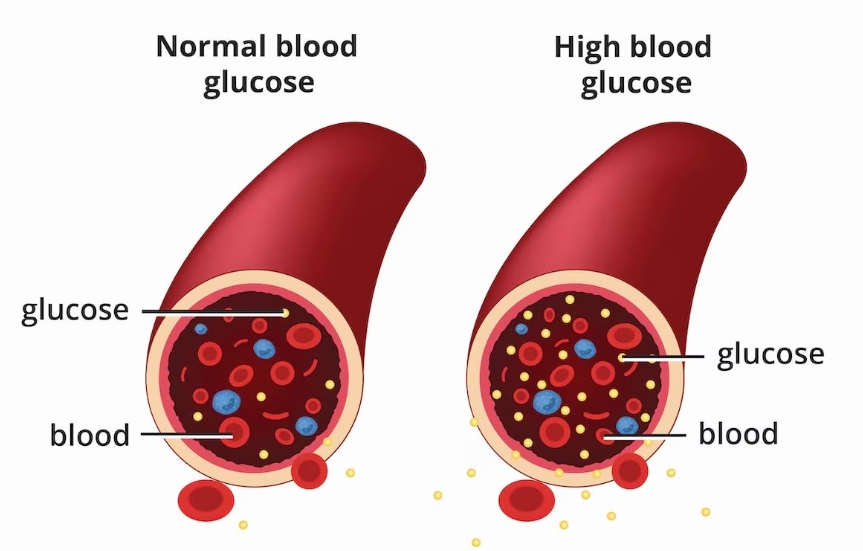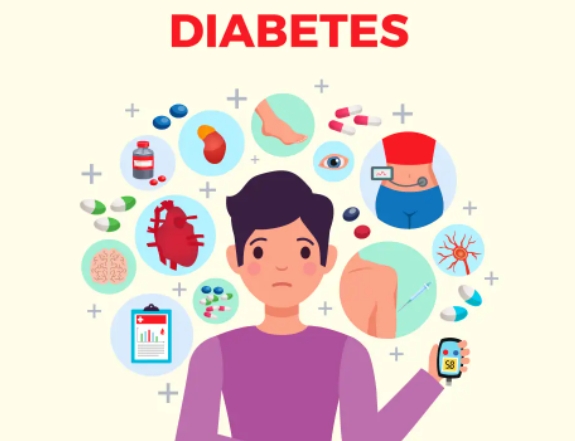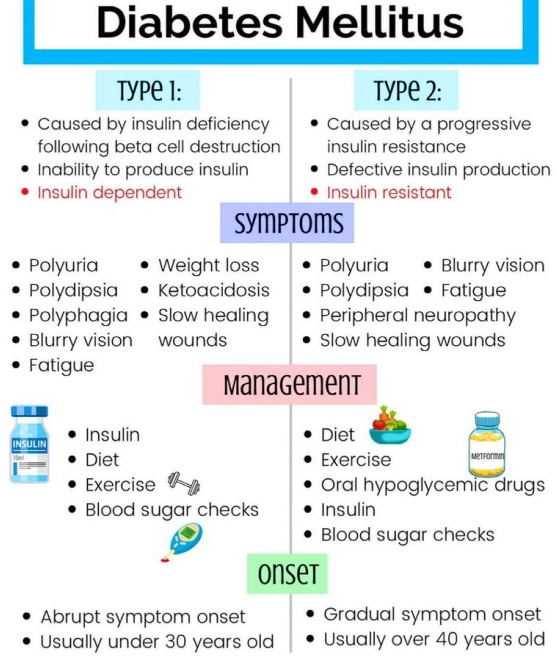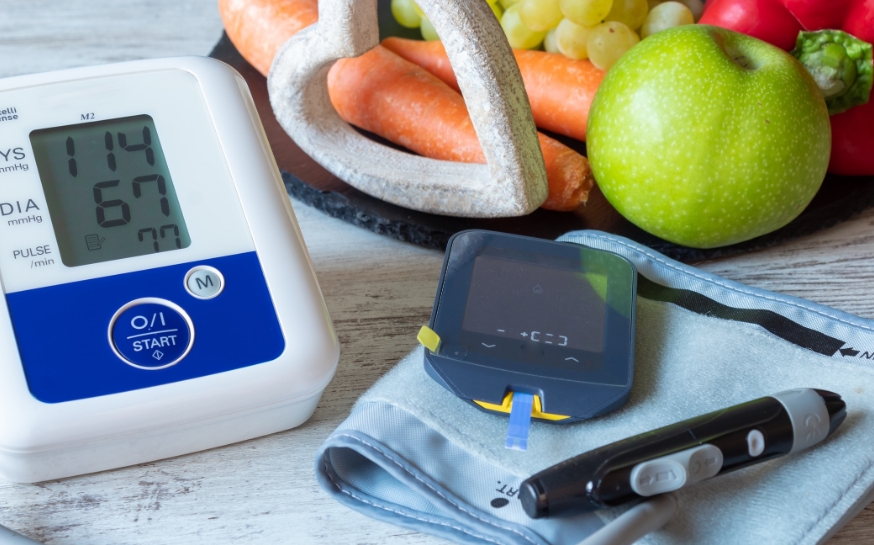Diabetes: What It Is, Causes, Symptoms, Treatment & Types
Diabetes is a global health epidemic affecting millions of people around the world. Understanding diabetes and its implications is crucial for prevention, early diagnosis, and effective management. This article will explore the various aspects of diabetes, from its definition and types to symptoms, causes, complications, diagnosis, and treatment.
What Is Diabetes?
Diabetes, also known as diabetes mellitus, is a chronic medical condition characterized by high blood sugar (glucose) levels. It occurs either when the pancreas does not produce enough insulin or when the body’s cells do not respond properly to insulin, the hormone that regulates blood sugar levels. Insulin is essential for converting glucose into energy, and without it, glucose can accumulate in the blood, leading to serious health issues.
What Are the Types of Diabetes?
There are several types of diabetes, each with unique causes and characteristics:
1. Type 1 Diabetes
Type 1 diabetes is an autoimmune condition where the body’s immune system mistakenly attacks and destroys the insulin-producing beta cells in the pancreas. This type usually develops in children and young adults but can occur at any age. People with Type 1 diabetes require lifelong insulin therapy to manage their blood sugar levels.
2. Type 2 Diabetes
Type 2 diabetes is the most common form of diabetes, accounting for approximately 90% of all cases. It typically develops in adults, often as a result of obesity and a sedentary lifestyle. In this type, the body becomes resistant to insulin or fails to produce enough insulin to maintain normal blood sugar levels. Management may include lifestyle changes, oral medications, and sometimes insulin administration.

3. Gestational Diabetes
Gestational diabetes occurs during pregnancy when the body cannot produce enough insulin to meet the increased demands. It typically resolves after childbirth but can increase the risk of developing Type 2 diabetes later in life for both mother and child.
4. Other Specific Types
There are also rare forms of diabetes, including monogenic diabetes and diabetes associated with conditions such as cystic fibrosis or hormonal disorders. These require specialized management.
How Common Is Diabetes?
Diabetes is a growing health concern worldwide. According to the International Diabetes Federation, as of 2021, approximately 537 million adults (20-79 years) were living with diabetes, and this number is projected to rise dramatically.
- Global Prevalence: By 2045, it is expected that 783 million adults will be living with diabetes.
- Age Factor: Type 2 diabetes prevalence is increasing among children and adolescents due to rising obesity rates and lifestyle changes.
- Socioeconomic Impact: Diabetes affects people across all economic backgrounds, though lower-income groups often face a higher burden due to limited access to healthcare and education.

Symptoms of Diabetes
Recognizing the symptoms of diabetes is crucial for early detection and management. Common symptoms include:
- Increased Thirst: Excessive thirst and dry mouth.
- Frequent Urination: Needing to urinate more often, especially at night.
- Extreme Hunger: Constant feeling of hunger despite eating.
- Fatigue: Persistent tiredness and lack of energy.
- Blurred Vision: Changes in vision due to fluctuations in blood sugar levels.
- Slow Wound Healing: Cuts, bruises, and sores that take time to heal.
- Unexplained Weight Loss: Particularly in Type 1 diabetes, where the body uses muscle and fat for energy.
If you experience any of these symptoms, it is essential to consult a healthcare professional for evaluation.
What Causes Diabetes?
The causes of diabetes vary depending on the type:
Type 1 Diabetes
The exact cause remains unclear, but it is believed to involve genetic and environmental factors that trigger an autoimmune response.
Type 2 Diabetes
Several lifestyle and genetic factors contribute to the development of Type 2 diabetes, including:
- Obesity: Excess fat, especially abdominal fat, increases insulin resistance.
- Sedentary Lifestyle: Lack of physical activity can lead to weight gain and insulin resistance.
- Family History: A family history of diabetes increases the risk.
- Age: Risk increases with age, particularly after 45.
- Poor Diet: High consumption of processed foods and sugary beverages can contribute to obesity and diabetes.
Gestational Diabetes
Hormonal changes during pregnancy combined with the body’s inability to produce enough insulin can lead to gestational diabetes.

What Are the Complications of Diabetes?
Diabetes can lead to severe complications if not well managed. These complications may include:
1. Cardiovascular Disease
Diabetes increases the risk of heart disease and stroke. High blood sugar can damage blood vessels and nerves that control the heart.
2. Nerve Damage (Neuropathy)
High glucose levels can cause nerve damage, leading to pain, tingling, and loss of sensation, particularly in the feet.
3. Kidney Damage (Nephropathy)
Diabetes can damage the kidneys’ filtering system, potentially leading to kidney failure.
4. Eye Damage
Diabetes increases the risk of severe eye conditions, including diabetic retinopathy, cataracts, and glaucoma, which can lead to blindness.
5. Foot Damage
Poor circulation and nerve damage can result in foot problems, increasing the risk of infections and amputations.
6. Skin Conditions
Diabetes may increase the risk of skin infections and other skin disorders.
Managing blood sugar levels effectively is essential in preventing these complications and ensuring a better quality of life.
How Is Diabetes Diagnosed?
Diagnosing diabetes involves several tests to measure blood sugar levels. The most common tests include:
1. Fasting Blood Sugar Test
A test measuring blood sugar levels after an overnight fast. A fasting blood sugar level of 126 mg/dL or higher indicates diabetes.
2. Oral Glucose Tolerance Test (OGTT)
Involves fasting overnight and then drinking a sugary solution to measure how the body processes glucose. A blood sugar level of 200 mg/dL or higher two hours after drinking the solution indicates diabetes.
3. Hemoglobin A1c Test
This test measures average blood sugar levels over the past 2-3 months. An A1c level of 6.5% or higher suggests diabetes.
4. Random Blood Sugar Test
A blood sample taken at any time, regardless of when the person last ate. A blood sugar level of 200 mg/dL or higher indicates diabetes.
A healthcare professional may use one or more of these tests to arrive at a diagnosis.
Treating Diabetes
Treatment plans vary depending on the type of diabetes and individual needs. Effective management can help control blood sugar levels and reduce the risk of complications.
Type 1 Diabetes Treatment
- Insulin Therapy: People with Type 1 diabetes require insulin injections or an insulin pump to regulate blood sugar.
- Monitoring Blood Sugar: Regular self-monitoring of blood glucose levels is essential.
Type 2 Diabetes Treatment
- Lifestyle Changes: Implementing a balanced diet, regular exercise, and weight management are critical.
- Oral Medications: Various medications can help manage blood sugar levels.
- Insulin Therapy: Some individuals may eventually need insulin as the disease progresses.
Gestational Diabetes Treatment
- Monitoring Blood Sugar: Regular monitoring of blood glucose levels is essential during pregnancy.
- Diet and Exercise: Maintaining a healthy diet and regular physical activity can often manage blood sugar levels.
- Insulin Therapy: If lifestyle changes are ineffective, insulin may be necessary.

Diabetes is a serious health condition that requires awareness, understanding, and proactive management. With proper education about its causes, symptoms, and treatment options, individuals can lead healthier lives. Regular check-ups, lifestyle adjustments, and adherence to treatment plans can significantly improve outcomes for those diagnosed with diabetes.
By raising awareness about diabetes, we equip individuals with the knowledge and tools necessary to combat this condition and its complications. Remember, early detection and management are keys to a healthier future. Consult a healthcare professional if you have concerns regarding diabetes or its symptoms. Together, we can take steps toward a healthier world, one informed choice at a time.




